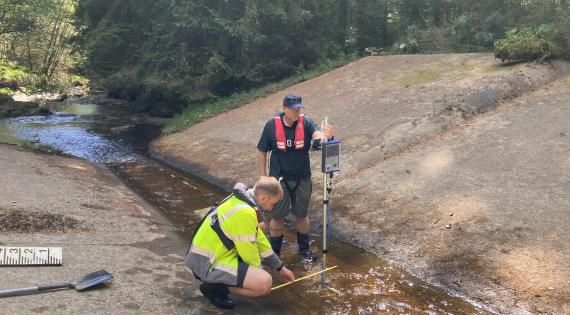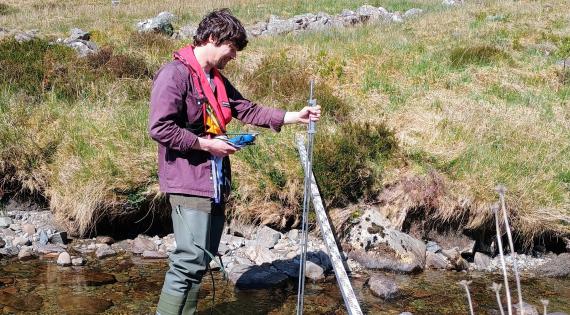Rainfall across the UK has been abnormally low during spring 2025, with England experiencing the driest spring since 1961. This has led to exceptionally low river flows in north and mid-Wales, the north-west of England and Scotland, including in the FDRI study catchments of the Severn and the Tweed. This presented us with an excellent opportunity to get out into the field and monitor these low flows.
In the Severn, we carried out our low flow monitoring using the Nuviflow stick, which provides manual water level and velocity measurements. This equipment is ideal for measuring in low flow levels such as those seen during the installation of our upgraded trapezoidal flume from 19-23 May. We experienced a fair bit of turbulence during the data collection so quality checking still needs to be undertaken on the data, but the preliminary results were 39.41 litres per second at the flume site and 35.79 litres per second at the exit of the forest.

